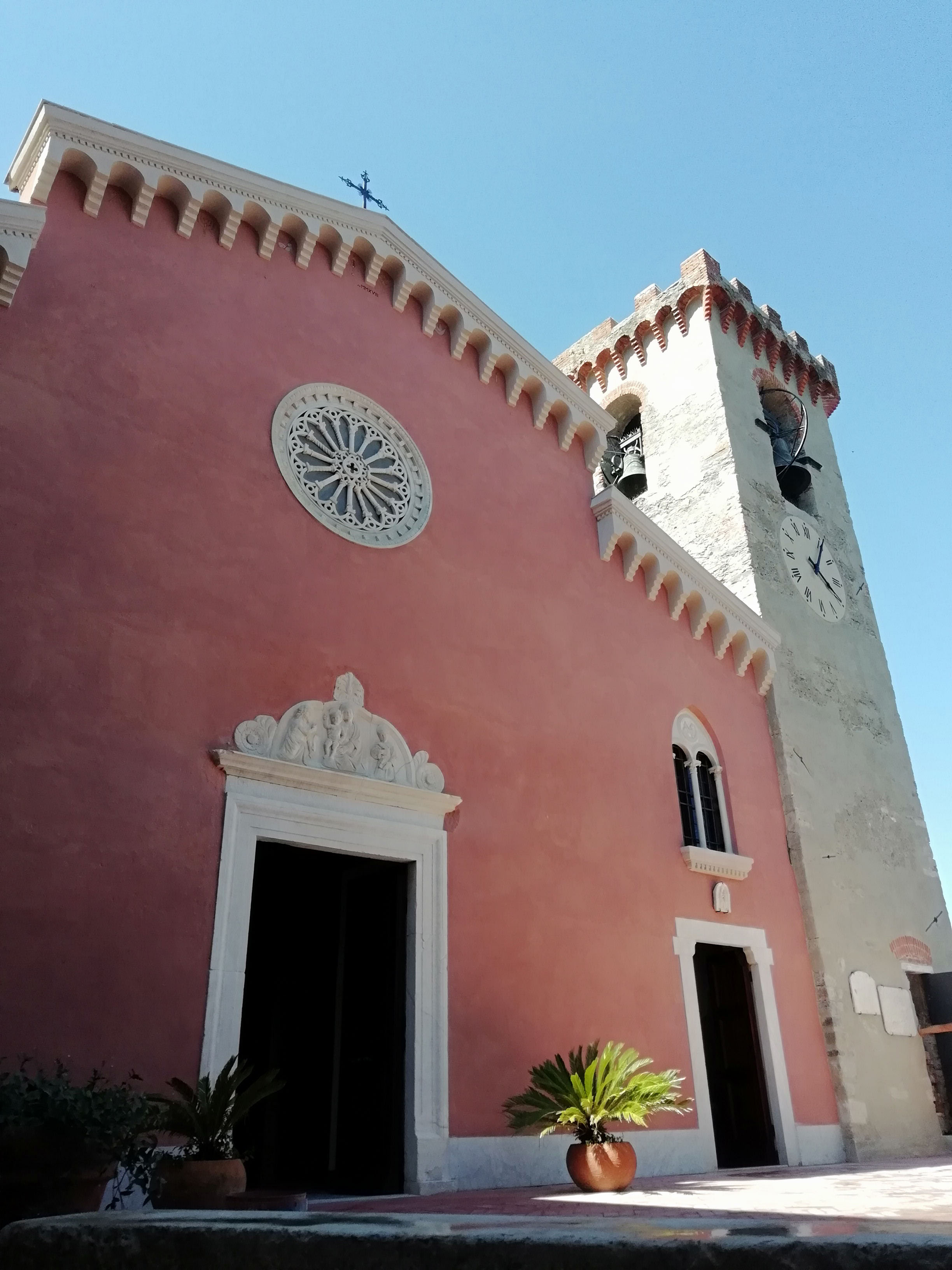Ameglia, situata sulla sommità di una collina, conserva inalterate le caratteristiche di antico borgo medioevale. Dall'alto del suo colle domina l'ultimo tratto del corso del fiume Magra e la pianura circostante. Ameglia è stata abitata sin dall'antichità. Infatti è proprio nel suo territorio che sono state scoperte le più antiche tracce di insediamento umano di tutta l'area. Nel 177 a.C. la fondazione della vicina città romana di Luni influenzò profondamente la vita dell'intera zona, ma con la fine dell'Impero Romano la città di Luni conobbe, a causa dell'inarrestabile impaludamento del suo porto e delle invasioni barbariche, una inesorabile decadenza. Questo portò alla fondazione di numerosi borghi collinari, in posizioni più sicure e salubri, tra cui Ameglia.
Ameglia, on top of a hill, is still maintains the characteristics of a medieval village. From its position Ameglia overlook the last stretch of the River Magra and the surrounding plain. Ameglia has been inhabited since ancient times. In fact it is in its territory that some of the oldest trail of human settlement of the whole area have been found. In 177 b.C. the birth of the Roman town of Luni, a few miles away, influenced the life of the whole area, but with the end of the Roman empire the town of Luni went towards an increasing due to the progressive silting up of its port and to Barbaric invasions. This led to the birth of several villages on the surrounding hills, considered safer and healthier,among which Ameglia.
La chiesa parrocchiale di San Vincenzo edificata nel XV secolo sui resti di un'antica pieve, è a tre navate con un vasto presbiterio. Al suo interno conserva un trittico marmoreo di Domenico Gar, datato 1527, nella nicchia centrale è raffigurato San Vincenzo Martire, fiancheggiato da San Rocco e San Sebastiano, mentre nella lunetta sovrastante è rappresentata l'Annunciazione. Altre opere degne di essere menzionate sono un'acquasantiera e il portale, raffigurante anch'esso un' annunciazione, entrambe di Francesco e Bernardino del Mastro, del XVI secolo. Tra le tele conservate vi è una Madonna col bambino, San Lorenzo, San Giovannino e Sant’Apollonia, del 1677 firmata dalla pittrice Francesca Martelli Prandini.
The Parish church of S. Vincenzo built in the XV century on the remains of an ancient “pieve”, has got three aisles and a very large presbytery. Inside the church worth of notice is a marble triptych of Domenico Gar, dating from 1527: in the central niche there are S.Vincenzo martyr next to S.Rocco and S.Sebastiano, while an Annunciation is represented in the over-hangig lunette. Other works of art worth mentioning are a stoup and the portal, also representing an Annunciation, both by Francesco and Bernardino del Mastro of the XVI century. Among the pictures there are a Virgin and a Child, S.Lorenzo, S.Giovannino and S. Apollonia of 1677 by the paintress Francesca Martelli Prandini.
La necropoli del IV secolo a.C.
Ad Ameglia, in località Cafaggio, si trova una necropoli ligure con numerose tombe a cassetta del IV secolo a.C. Il vasellame, i monili e le armature rinvenute attestano la vivacità commerciale della Popolazione Ligure Apuana in stretto contatto con Etruschi e Celti.
The Necropolis – 4th century b.C
In Ameglia - Cafaggio, there is a Ligurian necropolis with a lot of tombs from the 4th century b.C. The pottery, the jewels and the armor found show the commercial vivacity of the Population of the Ligurian Apuana in close contact with the Etruscans and the Celts.
Il Castello e la Torre
Il Castrum de Amelia, nominato fin dal 963 nel diploma dell'Imperatore Ottone I è arroccato su un enorme agglomerato di rocce di quarzo. La Torre di Ameglia è di forma cilindrica e fu costruita intorno al X-XII secolo. La torre fu abbattuta per azione di un terremoto; il vescovo Antonio da Camilla, verso la fine del XIII secolo, ne ricostruì un'altra in tutto simile a quella precedente e furono utilizzate pietre ricavate sul posto. Dopo la rovina di Luni, nell'XI secolo e fino al XIII secolo il castello divenne la dimora dei vescovi lunensi che amministravano la giustizia, imponevano tasse, organizzavano feste, cacce, banchetti e spettacoli. Oggi la corte interna alle mura è utilizzata come suggestivo scenario per gli spettacoli estivi.
The castle and the Tower
The Castrum de Amelia, mentioned in the diploma by Emperor Otto I since 963, was built on a huge quartz aglomeration. The Tower is round shaped and was built between the 10th and the 13th century. The ancient town of Ameglia was destroyed by an earthquake; the Bishop Antonio da Camila, had another tower built, similar in shape and size. After Luni declined, Ameglia became the summer seat of the Bishop of Luni, who settled here until the 13th century dispensing justice, imposing taxes and organising feasts. Today the inside courtyard provides a charming scenery to the cultural events which often take place in the summer.
